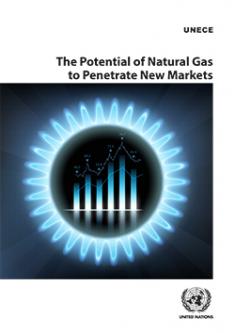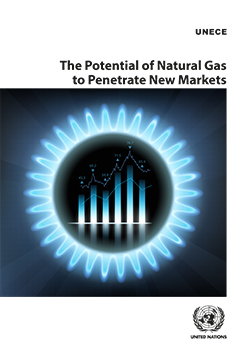Published:

 The Potential of Natural Gas to Penetrate New Markets
The Potential of Natural Gas to Penetrate New Markets(Geneva, 2019)
The versatility of gas means it can be used for heat, for power, for combined heat and power (CHP), for petrochemicals and fertilisers, and in internal combustion engines. Natural gas can also be used as a source of hydrogen, and with biogas can contribute to decarbonization.
Flexibility means there are considerable opportunities for expanded use of liquefied natural gas and compressed natural gas in land transport and for LNG at sea. New geographical markets are also available for natural gas in Southeastern Europe, and, especially, in parts of Russia and Central Asia.
Prospects for new geographical markets and for new applications have to be considered against a background of increasing urgency about the need to tackle the climate emergency. Modelling carried out for the UNECE indicates that If the UNECE region is to meet the Paris target of limiting the increase in global temperature to no more than two degrees, then its 56 member States will have to invest an extra $180 bn a year for the next 30 years over and above what they might otherwise be expected to invest in energy. Yet the potential costs of failing to address the climate emergency are of a comparable magnitude. Striking the right balance will not be easy.